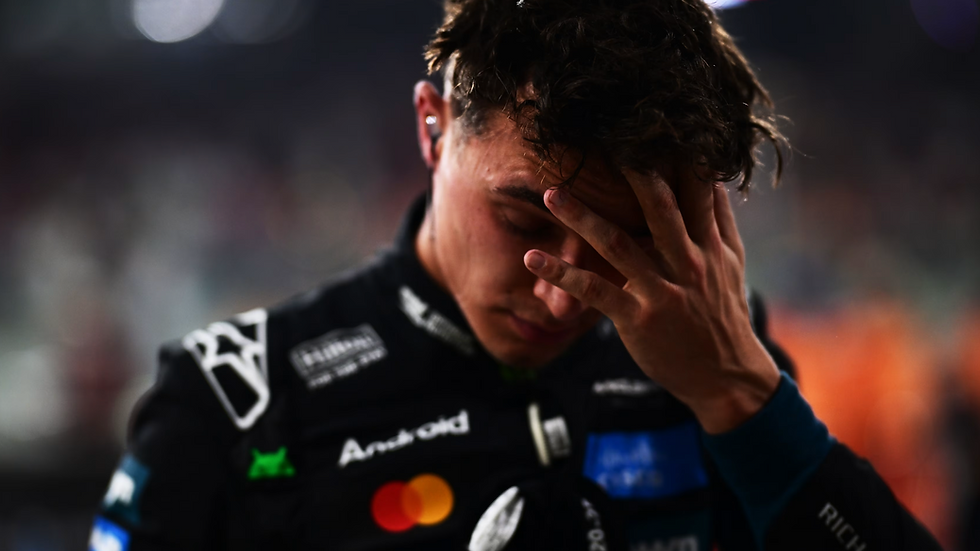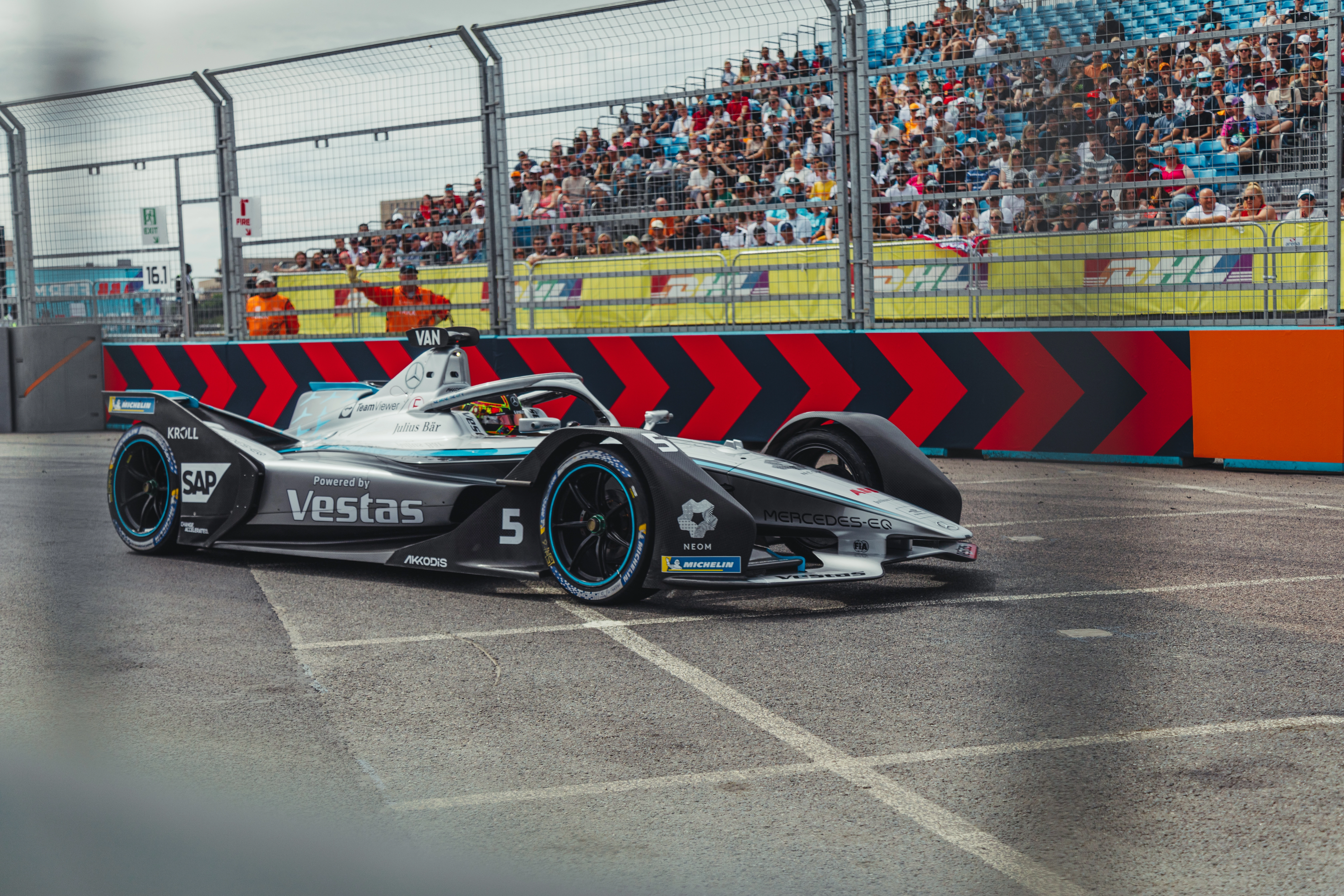Esports: A New Frontier
- DIVEBOMB Motorsport
- Dec 15, 2021
- 6 min read
In collaboration with the F1wow Racing League
Written by Thomas Bergamo, Mikaeel Ali, Morgan Holiday, Edited by Nabiha Khan
A hobby can become a passion. And that passion can turn into a job. This process occurs quite naturally, and the same goes for Esports.
The first official Formula 1 Esports competition was held in 2017, when the Esports world was in a developing phase. It immediately garnered incredible success. More than 60 thousand players decided to participate in the inaugural season, with 123 countries being represented. Only 20 drivers were chosen to compete in the finals. The winner of the first Formula 1 Esports series was the British Brendon Leigh. The following year the Formula 1 teams agreed to a program for their Esports drivers. That project was divided in two phases, the first one being the qualifications. In fact, Codemasters, in agreement with the Formula 1 teams, has offered the opportunity to gain a seat into one team. The teams, after qualifying, choose their drivers in an event called “Draft”. More than 66 thousand people participated in this event but, as in the first season, only 20 drivers could continue on to the second phase, the real competition. The most recent season saw a Dutch Esports driver, Jarno Opmeer take the title. This format has been utilized in all seasons since its installment.
The official location of the Formula 1 Esports final is the Gfinity Esports Arena in London, however, it currently can’t be held there in the wake of the global pandemic. But the show must go on. Indeed, Codemasters and the FIA have decided to hold the races with all drivers at their respective headquarters.
So, why should we keep an eye on Esports? Firstly, it gives you an opportunity that Formula 1 doesn’t. Where a career in Formula 1 has its costs, pursuing a career in Esports is much cheaper and lets you network with people who can become your friends. Esports is also a field that is gaining rapid momentum as they are now expanding in the sports world so much so someone has proposed to let them become an Olympic discipline.
Another question that one might ask is “what’s behind an Esport league?”, and “how does it work?”
These days, the league racing community is one that keeps on growing, with there being thousands of leagues on different platforms, such as Xbox, PlayStation, and PC. League racing is also often promoted on social media, with YouTubers such as Jarno Opmeer and Marcel Kiefer, the Esports driver for Redbull Racing, sharing their endeavors in league racing, outside of the typical ESports competitions. All of these leagues are tailored to a specific target audience. Some of these only let the best drivers compete, whereas others are more lenient, opting for a community feel, where all kinds of drivers are allowed to enter.
Thanks to the F1wow Racing League, we here at Divebomb are able to jump into the cockpit and take a look at what goes on behind the scenes, as well as what the drivers feel under the helmet. The league is formed by the drivers, which are divided into their respective teams, the constructors, the team bosses, the FIA stewards, and the media. The operation is quite simple. There are ten teams, with two drivers each, and two reserve drivers, making space for 20 “main” drivers, and 20 reserves. Each season a set calendar is announced, and the drivers battle it out for the championship each weekend at the selected tracks.
In this league, there are also team bosses. Team bosses have the task of overseeing the drivers, reserves, and day-to-day operations leading to the race. This can take the shape of hosting practice sessions for drivers, discussing strategy, and running race simulations. The FIA stewards are tasked with analysing incidents that occur during the races, and penalizing drivers if necessary. The media team streams the races live to an audience, commentating on the action that happens on the track. Finally, we come to the drivers. The drivers are tasked with turning up to the track every week and doing the best they can, to get the best result possible. Drivers are tasked with practicing and running simulations in their own time, before the inaugural race held at the weekend.
With the race being held towards the end of a week, it allows for drivers to have time during the week to practice and discuss strategies with the team. The race is formatted with a 20-minute qualifying session, where drivers compete to set the fastest lap possible, to determine their starting position. After the qualifying session, the drivers have a short five-minute break, before being set on the grid, contemplating their strategy for the first laps, and waiting for the lights to go out. In most leagues, damage settings are turned on, meaning that if two drivers battle too hard, one or even both will often come out with missing bodywork, limping back to the pits, and often ruining their races.
Drivers are also tasked with managing their fuel. It is crucial for drivers to manage their fuel settings, as setting too low fuel means that the drivers might not have enough to reach the chequered flag. If drivers are to set too much fuel, it means their car is being unnecessarily weighed down, costing them a lengthy time advantage over others around them. Drivers must also manage their ERS system, which is energy harvested by the battery. This ERS system gives drivers a short boost, allowing them to edge closer to a competitor. It is important that drivers manage this with care, as if they are to burn through their supply, they must spend up to 3 laps harvesting it back, making them vulnerable to an overtake behind. Finally, drivers need to manage their tyres carefully. Staying out for too long on worn tyres, can lead to performance losses, and as we have seen before, even a puncture.
Some might ask, “what are the requirements to become a driver in F1 ESports leagues? The simple answer for most community leagues is that there are none. Basic understanding and respect for others on track is required, but in terms of hardware, age and ability, most leagues have no restrictions. Most casual drivers opt for a controller setup, in which they simply use their respected platform controller, using the analog stick to steer, and the triggers to brake and accelerate, with some also opting for a headset connecting, to communicate with the team. For more serious drivers, they opt for a sim-racing wheel setup, which requires drivers to reach into their pockets and spend hundreds of pounds. Wheels are proven to give a slight advantage; however, skill overpowers hardware, and we often see controller drivers being able to challenge those on a wheel.
A misconception that is often raised in sim racing is that “it’s just a game”. While this might be true, the passion people have for racing online is unmatched, with many drivers spending hours perfecting their setups and practicing for upcoming races. Simulation games are set up in a way where it mimics the real physics and sensations of driving an F1 car as closely as possible, meaning the drivers must be 100% focused if they want to avoid a mistake. One wrong move, missing an apex, touching the grass, can send a driver into an error, leading to a spin, and even a DNF from the race, making all the time spent practicing, worth nothing. This links to the fact that we see many drivers often angry or upset after a poor result, with some questioning why they are angry over a game.
Another unique thing about esports is the ecosystem that is created into it. How many times have your parents said to you “if you stay on video games all day, you won’t make any friends”? Contrary to what they say, when you enter a league, you feel welcome, and share rivalries with fellow drivers on and off the track. This creates an ecosystem formed by pure respect and a common friendship, but on the field, it becomes a rivalry that pushes you to give the best you can do in every race, from beating your friends to demonstrating that you are the best.
You might think “So, what makes Esports such a special category?”. The world of Esports invokes the feeling of camaraderie and respect even amongst the fiercest of rivals as they all fight for the championship, sharing the same passion and love for racing. Even though not in a real Formula 1 car, these drivers practice just as relentlessly for hours on end, pushing themselves to the limit in qualifying and the races. Lastly, Esports teaches us several important lessons, those of respect, diligence, and hard racing, ones which are just as valuable in real life.
To our readers, would you give Esports a chance?
The F1wow Racing League is just about to enter its fourth season, so be sure to join the Discord if you are interested! https://discord.gg/N9VFRyKswH








Comments